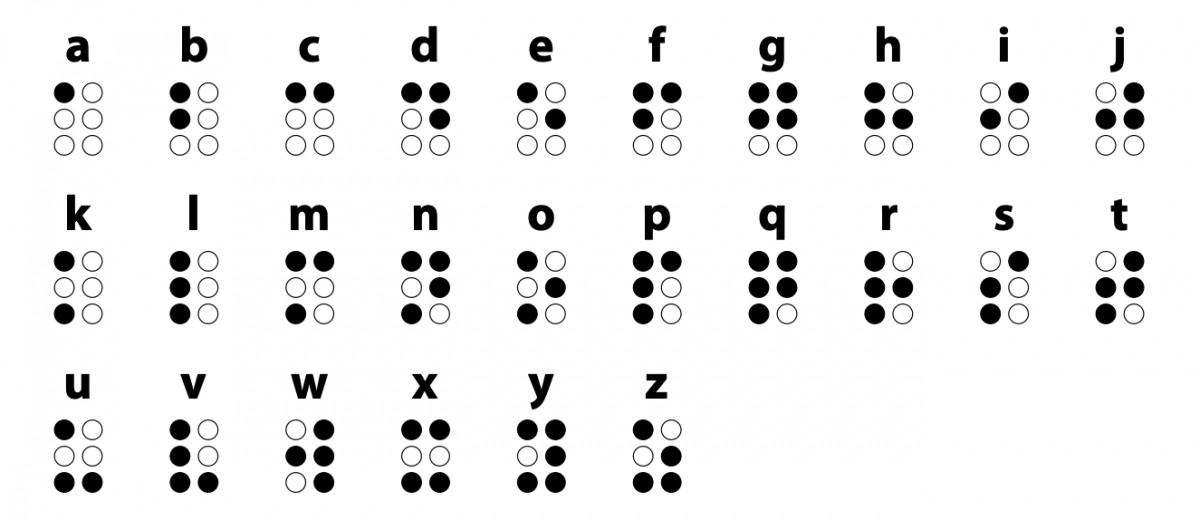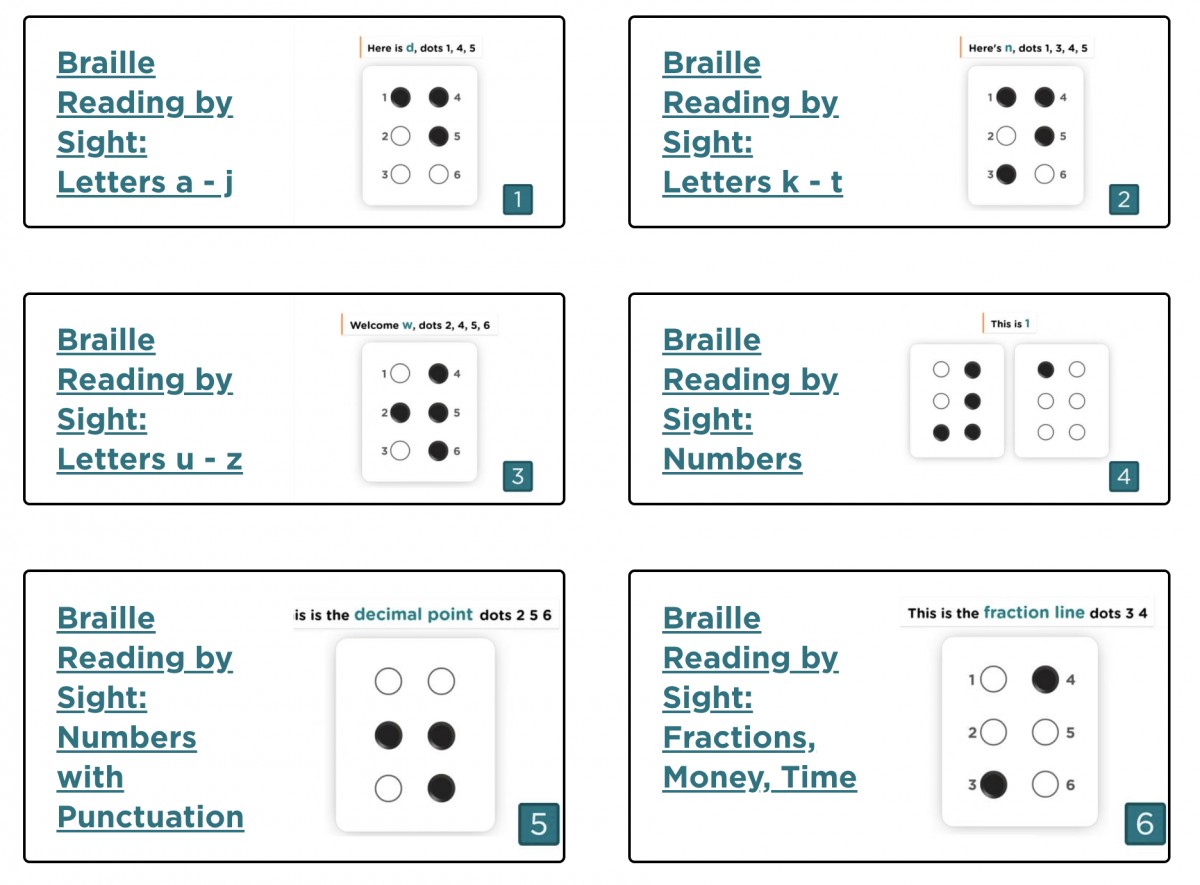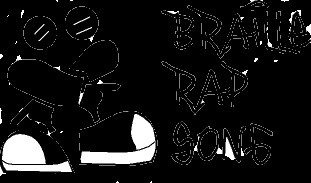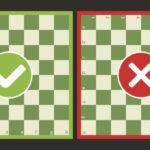Learning How To Learn Braille As A Sighted Person opens up a world of possibilities, from understanding accessibility to appreciating the richness of tactile communication. At LEARNS.EDU.VN, we believe everyone can learn braille, regardless of their vision. This guide simplifies the process of learning braille for sighted individuals, providing practical resources and effective learning strategies. Explore tactile literacy, accessible communication, and alternative reading methods with us.
1. Understanding Braille: The Foundation of Tactile Literacy
Braille is more than just an alternative alphabet; it’s a gateway to literacy for individuals with visual impairments. Understanding its fundamental principles is the first step in learning braille as a sighted person.
1.1. What is Braille?
Braille is a tactile writing system used by people who are blind or visually impaired. It is named after its creator, Louis Braille, a French educator who was himself blind. Braille isn’t a language, but rather a code by which many languages, such as English, Spanish, Arabic, and Chinese, may be written.
1.2. The Braille Cell: The Building Block
The basic unit of braille is the braille cell. This cell consists of six dots arranged in two columns of three dots each. Different combinations of these dots represent letters, numbers, punctuation marks, and other symbols.
- Dot Numbers: The dots are numbered 1 through 6. The upper left dot is 1, the middle left is 2, the lower left is 3, the upper right is 4, the middle right is 5, and the lower right is 6.
- Combinations: By using different combinations of these six dots, 64 different characters can be represented, including the alphabet, numbers, punctuation, and common words.
1.3. Grades of Braille: An Overview
There are different levels of braille, each serving a different purpose:
- Uncontracted Braille (Grade 1): This is the most basic form of braille, where each letter and punctuation mark is represented by a braille cell. It is primarily used by beginners.
- Contracted Braille (Grade 2): This form uses contractions, or short forms, to represent common words and letter combinations. It reduces the size of braille texts and makes reading faster. For example, the letter combination “and” is represented by a single cell.
- Advanced Braille (Grades 3): This includes even more complex contractions and is typically used for advanced reading and writing.
2. Why Learn Braille as a Sighted Person?
There are numerous reasons why a sighted person might want to learn braille. Beyond personal enrichment, it offers several practical and professional advantages.
2.1. Enhanced Empathy and Understanding
Learning braille allows you to gain a deeper understanding of the challenges and experiences of individuals with visual impairments. This can foster empathy and improve your ability to communicate and interact with blind individuals.
2.2. Improved Accessibility Advocacy
By understanding braille, you can become a more effective advocate for accessibility in your community. You can help ensure that public spaces, educational materials, and digital content are accessible to people with visual impairments.
2.3. Professional Opportunities
For educators, therapists, and social workers, braille literacy can open up new professional opportunities. There is a growing demand for professionals who can teach braille, create braille materials, and support students with visual impairments.
2.4. Cognitive Benefits
Learning braille can also have cognitive benefits. It can improve your memory, spatial reasoning, and tactile discrimination skills. The process of learning a new tactile language can also enhance your brain’s neuroplasticity. Studies have shown that tactile learning can enhance cognitive flexibility and problem-solving skills.
2.5. Personal Enrichment
Finally, learning braille can be a personally enriching experience. It allows you to connect with a different culture and appreciate the beauty and complexity of tactile communication.
3. Setting the Stage: Preparing to Learn Braille
Before diving into the specifics of learning braille, it’s essential to set the stage properly. This involves gathering the right materials, understanding basic terminology, and adopting an effective learning mindset.
3.1. Essential Materials for Learning Braille
To begin learning braille, gather the following materials:
- Braille Alphabet Chart: A visual representation of the braille alphabet is essential for reference.
- Braille Writing Tools: A slate and stylus are traditional tools for writing braille. A braille typewriter (also known as a Perkins Brailler) can also be used.
- Braille Paper: This is thicker than regular paper to allow the dots to be raised properly.
- Braille Books and Materials: Start with simple braille books or practice materials.
- Online Resources: Websites and apps that offer braille lessons and practice exercises.
3.2. Understanding Braille Terminology
Familiarize yourself with common braille terms:
- Braille Cell: The basic unit of braille, consisting of six dots.
- Slate and Stylus: Tools used to write braille manually.
- Perkins Brailler: A typewriter-like machine for writing braille.
- Contractions: Short forms used in contracted braille to represent common words and letter combinations.
- Tactile Graphics: Raised images that allow blind individuals to perceive visual information through touch.
- Nemeth Code: A braille code used for mathematics and science.
3.3. Adopting the Right Mindset
Approach learning braille with patience and persistence. It takes time and effort to develop tactile reading skills. Be prepared to practice regularly and don’t get discouraged by initial challenges. Embrace the learning process and celebrate your progress along the way. A positive attitude is key to success.
4. Step-by-Step Guide: How to Learn Braille
Learning braille involves a structured approach, starting with the basics and gradually building your skills. Here’s a step-by-step guide to help you on your journey.
4.1. Step 1: Master the Braille Alphabet
The first step is to learn the braille alphabet. Use a braille alphabet chart to memorize the dot patterns for each letter. Practice writing each letter using a slate and stylus or a braille typewriter.
- Visual Aids: Use visual aids like flashcards or online tools to reinforce your memory.
- Mnemonics: Create mnemonics or memory aids to help you remember the dot patterns for each letter.
- Regular Practice: Practice writing the alphabet every day until you can recall the dot patterns from memory.
4.2. Step 2: Learn Braille Numbers and Punctuation
Once you have mastered the alphabet, move on to learning braille numbers and punctuation marks. These are also represented by specific dot patterns.
- Number Signs: In braille, numbers are preceded by a number sign (dots 3-4-5-6).
- Punctuation: Learn the dot patterns for common punctuation marks like commas, periods, question marks, and exclamation points.
- Practice Sentences: Write simple sentences using numbers and punctuation to reinforce your learning.
4.3. Step 3: Introduction to Contractions
After mastering the alphabet, numbers and punctuations move on to learning contractions. These are short forms used in contracted braille to represent common words and letter combinations. Start with a list of common contractions.
- Common Contractions: Begin with the most frequently used contractions, such as “and,” “the,” “of,” and “for.”
- Gradual Learning: Introduce new contractions gradually, one at a time, to avoid feeling overwhelmed.
- Contextual Practice: Practice reading and writing sentences that use contractions in context.
4.4. Step 4: Practice Reading Braille
Reading braille is a crucial skill. Start with simple braille books or practice materials. Use your fingers to trace the dots and identify the letters, numbers, and contractions.
- Start Simple: Begin with braille books designed for beginners, with clear and simple text.
- Finger Placement: Use your index fingers to read braille. Lightly touch the dots and move your fingers from left to right across each line.
- Regular Reading: Practice reading braille every day to improve your tactile reading skills.
4.5. Step 5: Practice Writing Braille
Writing braille is equally important. Use a slate and stylus or a braille typewriter to practice writing letters, numbers, contractions, and sentences.
- Slate and Stylus: Practice using a slate and stylus to write braille manually. This can be challenging at first, but with practice, you will become more proficient.
- Braille Typewriter: If possible, use a braille typewriter to practice writing braille. This can be faster and more efficient than using a slate and stylus.
- Transcription Exercises: Transcribe simple texts from print to braille to reinforce your writing skills.
4.6. Step 6: Immerse Yourself in Braille
To truly master braille, immerse yourself in the braille world. Read braille books, listen to braille audiobooks, and connect with braille users.
- Braille Libraries: Visit braille libraries or online resources to access a wide range of braille materials.
- Braille Communities: Join braille communities or online forums to connect with other braille learners and users.
- Braille Events: Attend braille events, workshops, and conferences to learn more about braille and meet other braille enthusiasts.
5. Effective Learning Strategies
To maximize your learning potential, incorporate these effective strategies into your braille learning journey.
5.1. Multisensory Learning
Engage multiple senses in your learning process. Combine visual, auditory, and tactile learning techniques to reinforce your understanding of braille.
- Visual: Use braille alphabet charts and flashcards to visualize the dot patterns.
- Auditory: Listen to braille audiobooks or recordings of braille text.
- Tactile: Practice writing and reading braille to develop your tactile skills.
5.2. Spaced Repetition
Use spaced repetition to review and reinforce your knowledge of braille. Review previously learned material at increasing intervals to improve retention.
- Flashcards: Use flashcards to review the braille alphabet, numbers, and contractions.
- Online Tools: Use online spaced repetition tools to schedule and track your review sessions.
- Regular Review: Set aside time each day to review previously learned material.
5.3. Active Recall
Actively recall information from memory rather than passively rereading or reviewing. This strengthens your memory and improves your understanding of braille.
- Self-Testing: Test yourself regularly on the braille alphabet, numbers, and contractions.
- Practice Exercises: Complete practice exercises that require you to recall and apply your knowledge of braille.
- Teach Others: Teach others what you have learned about braille to reinforce your understanding and memory.
5.4. Gamification
Make learning braille fun and engaging by incorporating gamification techniques. Use games, challenges, and rewards to motivate yourself and track your progress.
- Braille Games: Play braille games online or with friends to practice your skills.
- Challenges: Set challenges for yourself, such as reading a certain number of braille pages each day.
- Rewards: Reward yourself for achieving your learning goals.
5.5. Break Down Complex Tasks
Break down complex tasks into smaller, more manageable steps. This makes the learning process less overwhelming and more achievable.
- Alphabet First: Focus on mastering the braille alphabet before moving on to numbers, punctuation, and contractions.
- Gradual Progression: Gradually progress from simple braille texts to more complex materials.
- Step-by-Step Approach: Follow a step-by-step approach to learning braille, focusing on one skill at a time.
6. Resources for Learning Braille
Take advantage of the many resources available to support your braille learning journey.
6.1. Online Courses and Tutorials
Numerous online courses and tutorials offer structured braille lessons for sighted individuals.
- Hadley School for the Blind: Offers free online braille courses for sighted individuals.
- National Braille Press: Provides braille learning materials and resources.
- American Printing House for the Blind (APH): Offers braille training and educational materials.
- LEARNS.EDU.VN: Here at LEARNS.EDU.VN, we also offer a variety of online courses and tutorials to help you learn braille at your own pace.
6.2. Braille Learning Apps
Braille learning apps provide interactive exercises and games to help you practice your braille skills.
| App Name | Description | Platform |
|---|---|---|
| Braille Tutor | Offers interactive lessons and practice exercises for learning the braille alphabet and contractions. | iOS, Android |
| Braille Easy | Provides a simple and intuitive way to learn braille with customizable lessons and progress tracking. | iOS |
| iBraille Trainer | Helps you learn braille through a series of drills and games designed to improve your reading and writing skills. | iOS |
| Tactile Alphabet App | Focuses on tactile learning of the alphabet using touch gestures and audio feedback. | iOS, Android |



6.3. Braille Books and Materials
Access braille books and materials from libraries, organizations, and online retailers.
- National Library Service for the Blind and Print Disabled (NLS): Provides free braille and audio books to eligible individuals.
- Seedlings Braille Books for Children: Offers a wide selection of braille books for children of all ages.
- Amazon: Sells braille books, charts, and learning materials.
6.4. Braille Transcription Services
Use braille transcription services to convert print materials into braille.
- National Braille Press: Offers braille transcription services for individuals and organizations.
- American Printing House for the Blind (APH): Provides braille transcription and production services.
- Local Braille Transcribers: Find local braille transcribers in your area through professional organizations and online directories.
6.5. Braille Communities and Organizations
Connect with braille communities and organizations to network with other learners and users.
- National Federation of the Blind (NFB): Advocates for the rights and independence of blind individuals.
- American Council of the Blind (ACB): Promotes the rights and independence of people who are blind and visually impaired.
- Braille Literacy Canada: Supports braille literacy and education in Canada.
7. Overcoming Common Challenges
Learning braille can be challenging, but with the right strategies, you can overcome common obstacles.
7.1. Difficulty with Tactile Discrimination
Some sighted individuals may have difficulty with tactile discrimination, making it challenging to distinguish between different braille dot patterns.
- Tactile Exercises: Practice tactile exercises to improve your tactile sensitivity.
- Fine Motor Skills: Develop your fine motor skills through activities like drawing, knitting, or playing musical instruments.
- Sensory Training: Engage in sensory training exercises to enhance your ability to perceive tactile information.
7.2. Remembering Braille Dot Patterns
Memorizing the braille dot patterns can be difficult, especially for beginners.
- Mnemonics: Create mnemonics or memory aids to help you remember the dot patterns for each letter, number, and contraction.
- Flashcards: Use flashcards to review and reinforce your knowledge of the braille dot patterns.
- Spaced Repetition: Use spaced repetition to review previously learned material at increasing intervals.
7.3. Maintaining Motivation
Staying motivated can be challenging, especially when progress seems slow.
- Set Goals: Set realistic and achievable goals for yourself.
- Track Progress: Track your progress and celebrate your achievements along the way.
- Find a Learning Buddy: Find a learning buddy or join a braille community to stay motivated and accountable.
7.4. Time Constraints
Balancing braille learning with other commitments can be difficult.
- Schedule Time: Schedule dedicated time for braille learning each day or week.
- Break It Up: Break up your learning sessions into smaller, more manageable chunks.
- Use Downtime: Use downtime, such as commuting or waiting in line, to practice braille.
8. Advanced Braille Concepts
Once you have mastered the basics of braille, you can explore more advanced concepts.
8.1. Nemeth Code
Nemeth Code is a braille code used for mathematics and science. It allows blind individuals to access complex mathematical and scientific notations.
- Symbols and Notations: Learn the symbols and notations used in Nemeth Code.
- Mathematical Equations: Practice transcribing and reading mathematical equations using Nemeth Code.
- Scientific Texts: Explore scientific texts and materials written in Nemeth Code.
8.2. Braille Music
Braille music is a system for transcribing musical scores into braille. It allows blind musicians to read and write music.
- Musical Notation: Learn the musical notation used in braille music.
- Transcribing Music: Practice transcribing musical scores into braille.
- Reading Braille Music: Learn to read braille music and play musical instruments.
8.3. Tactile Graphics
Tactile graphics are raised images that allow blind individuals to perceive visual information through touch.
- Types of Tactile Graphics: Learn about different types of tactile graphics, such as maps, diagrams, and illustrations.
- Creating Tactile Graphics: Practice creating tactile graphics using specialized tools and materials.
- Interpreting Tactile Graphics: Learn to interpret tactile graphics and extract meaningful information.
9. The Future of Braille
Braille continues to evolve and adapt to new technologies and changing needs.
9.1. Braille Technology
Advances in technology are making braille more accessible and versatile than ever before.
- Refreshable Braille Displays: These devices allow blind individuals to read braille on a computer screen or mobile device.
- Braille Embossers: These printers produce braille documents quickly and efficiently.
- Braille Translation Software: This software converts print text into braille automatically.
9.2. Braille Advocacy
Advocates continue to work to promote braille literacy and ensure that blind individuals have access to braille materials and education.
- Braille Bills: Legislation that supports braille literacy and education.
- Accessibility Standards: Standards that ensure that public spaces, educational materials, and digital content are accessible to people with visual impairments.
- Public Awareness Campaigns: Campaigns to raise awareness about the importance of braille literacy.
9.3. Braille in Education
Braille plays a crucial role in the education of blind and visually impaired students.
- Braille Instruction: Qualified teachers and instructors provide braille instruction to students of all ages.
- Braille Curriculum: Educational materials and resources are available in braille to support the curriculum.
- Assistive Technology: Assistive technology, such as braille displays and embossers, is used to enhance braille learning and access.
10. Frequently Asked Questions (FAQ)
10.1. Is Braille Difficult to Learn?
Learning braille can be challenging, but with patience, persistence, and the right resources, it is achievable.
10.2. How Long Does It Take to Learn Braille?
The time it takes to learn braille varies depending on your learning style, dedication, and goals. Some people may learn the basics in a few months, while others may take longer to master advanced concepts.
10.3. Do I Need to Be Blind to Learn Braille?
No, anyone can learn braille, regardless of their vision. Sighted individuals can benefit from learning braille for personal, professional, and advocacy reasons.
10.4. What Are the Benefits of Learning Braille?
Learning braille can enhance empathy, improve accessibility advocacy, open up professional opportunities, and provide cognitive benefits.
10.5. Where Can I Find Braille Learning Resources?
Braille learning resources are available online, in libraries, and through organizations like the National Braille Press and the American Printing House for the Blind.
10.6. What Tools Do I Need to Learn Braille?
You will need a braille alphabet chart, braille writing tools (slate and stylus or braille typewriter), braille paper, braille books, and online resources.
10.7. How Can I Practice Reading Braille?
Practice reading braille by using your fingers to trace the dots and identify the letters, numbers, and contractions. Start with simple braille books and gradually progress to more complex materials.
10.8. How Can I Improve My Tactile Discrimination Skills?
Improve your tactile discrimination skills through tactile exercises, fine motor skills activities, and sensory training exercises.
10.9. What Is Nemeth Code?
Nemeth Code is a braille code used for mathematics and science.
10.10. How Can I Stay Motivated While Learning Braille?
Stay motivated by setting realistic goals, tracking your progress, finding a learning buddy, and rewarding yourself for achieving your learning goals.
Learning braille as a sighted person is a rewarding journey that opens up new perspectives and opportunities. By following this comprehensive guide, you can master the basics, overcome challenges, and unlock the power of tactile literacy. Remember to explore the resources available at LEARNS.EDU.VN, where we offer a wealth of information and courses to support your learning journey.
Ready to take the next step? Visit LEARNS.EDU.VN today to explore our courses and discover how you can learn braille effectively. For more information, contact us at 123 Education Way, Learnville, CA 90210, United States, or WhatsApp at +1 555-555-1212. Let learns.edu.vn be your guide in the world of braille.

